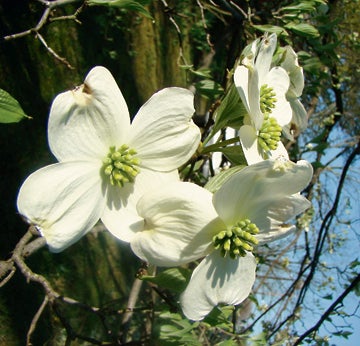Consumer Qs: shoepeg corn, dogwood or flowering dogwood
Published 11:00 am Wednesday, April 13, 2016

- The flowering dogwood is one the most useful and beloved ornamental trees because of its spring flowers, colorful fall foliage, bright red berries, attractive bark, gray buds and tiered branching pattern.
uestion: Is there a difference between a dogwood and flowering dogwood? Does one flower more than the other?
Answer: Most of us simply say “dogwood” when we are referring to the beautiful native tree that graces our woodlands and gardens with large, cross-shaped flowers in the spring. Its botanical name, Cornus florida, means “flowering dogwood.” People use the name “flowering dogwood” to distinguish Cornus florida from other species of dogwoods that may be found naturally in our landscape or introduced from other parts of the world.
Some of the other dogwoods you may encounter are kousa dogwood (Cornus kousa), cornelian cherry (Cornus mas), silky dogwood (Cornus amomum), alternate-leaf/pagoda dogwood (Cornus alternifolia), red twig dogwood (Cornus alba), red-osier dogwood (Cornus sericea) and yellow twig dogwood (Cornus sericea ‘Flaviramea’). Although each of these has its virtues, none is as beautiful as our native flowering dogwood.
Q: What is shoepeg corn?
A: Shoepeg corn is a type of corn with small, narrow kernels resembling the wooden pegs cobblers once used to attach the upper part of the shoe to the sole. The most common variety of shoepeg corn available today is “Country Gentleman,” an old (introduced in 1890), white variety that is noted for its sweetness and for its lack of rows. Its kernels are not arranged in neat rows but are irregularly packed tightly together on the cob. Most sources consider the lack of rows as a defining characteristic of shoepeg types, but others do not. Another old variety, “Pencil Cob” corn, is sometimes listed as a shoepeg type. However, its narrow kernels are arranged in rows on its notably pencil-thin cob.
Q: I saw a large butterfly on a sunny afternoon last month. It was fairly large, dark brown and had a band of pale yellow on the outer edge of its wings. What kind is it and what is it doing out in the middle of winter?
A: You saw a mourning cloak, one of our most beautiful and interesting butterflies. Most species of butterflies overwinter either in the caterpillar stage or in the pupa stage. The mourning cloak is unusual in that it overwinters as an adult butterfly. It finds a sheltered spot and hibernates. During warm periods in winter, the mourning cloak may become active. When cold weather returns, it goes back into hibernation.
The caterpillar of the mourning cloak is known as the spiny elm caterpillar. In our area it feeds on elms, willows, hackberries and Eastern cottonwood. Adult mourning cloaks prefer to feed on tree sap, especially that of oaks. They also feed on rotting fruit and only occasionally on flower nectar.
If you get a chance to see a mourning cloak closer or for a longer time, you will see a row of light blue dots on the inside of the yellow band at the edge of the wings.
For more information, contact Arty Schronce (arty.schronce@agr.georgia.gov) or visit the department’s website at www.agr.georgia.gov


